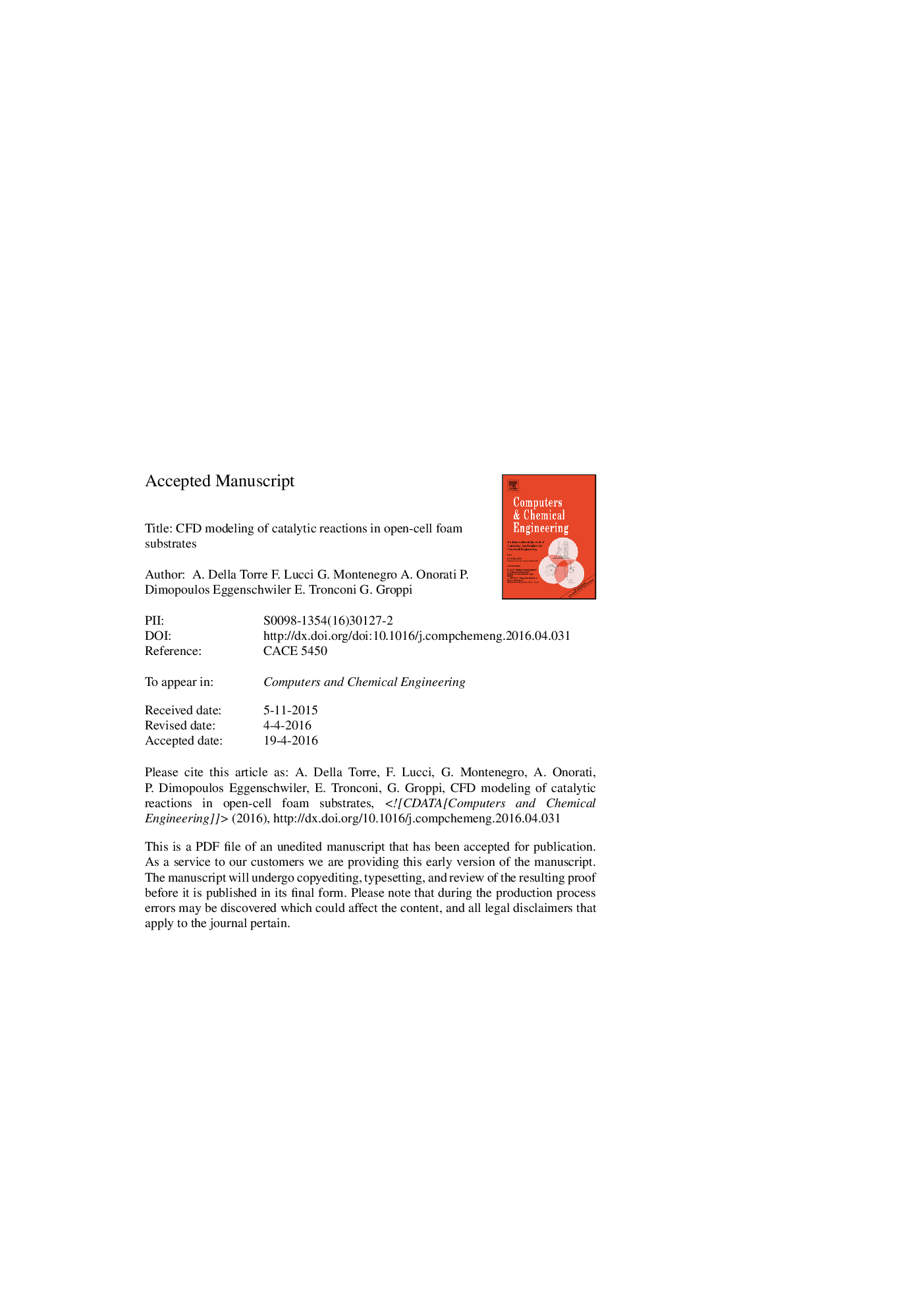| Article ID | Journal | Published Year | Pages | File Type |
|---|---|---|---|---|
| 6595176 | Computers & Chemical Engineering | 2016 | 14 Pages |
Abstract
Open cell foams are regarded with interest for applications as catalytic substrates for combustion, reformers and after-treatment converters for the pollutant emissions control. In this context, CFD represents a reliable and convenient tool for investigating and understanding the physical phenomena occurring at the micro-scale, in order to design and optimize these substrates. A CFD model for the simulation of the catalytic reactions occurring over the surface of open-cell foams is implemented and validated. The approach is based on a coupled finite-volume/finite-area strategy capable to describe the fluid-dynamic and the chemical phenomena occurring in both the fluid phase and solid phases. The adsorption/desorption of the reactants on the active sites and the surface reaction is modeled on the basis of a Langmuir-Hinshelwood mechanism. The model is able to describe the reactants conversion under both kinetics and diffusion control, allowing to predict the light-off curve characterizing the catalyst-coated foam substrate.
Related Topics
Physical Sciences and Engineering
Chemical Engineering
Chemical Engineering (General)
Authors
A. Della Torre, F. Lucci, G. Montenegro, A. Onorati, P. Dimopoulos Eggenschwiler, E. Tronconi, G. Groppi,
